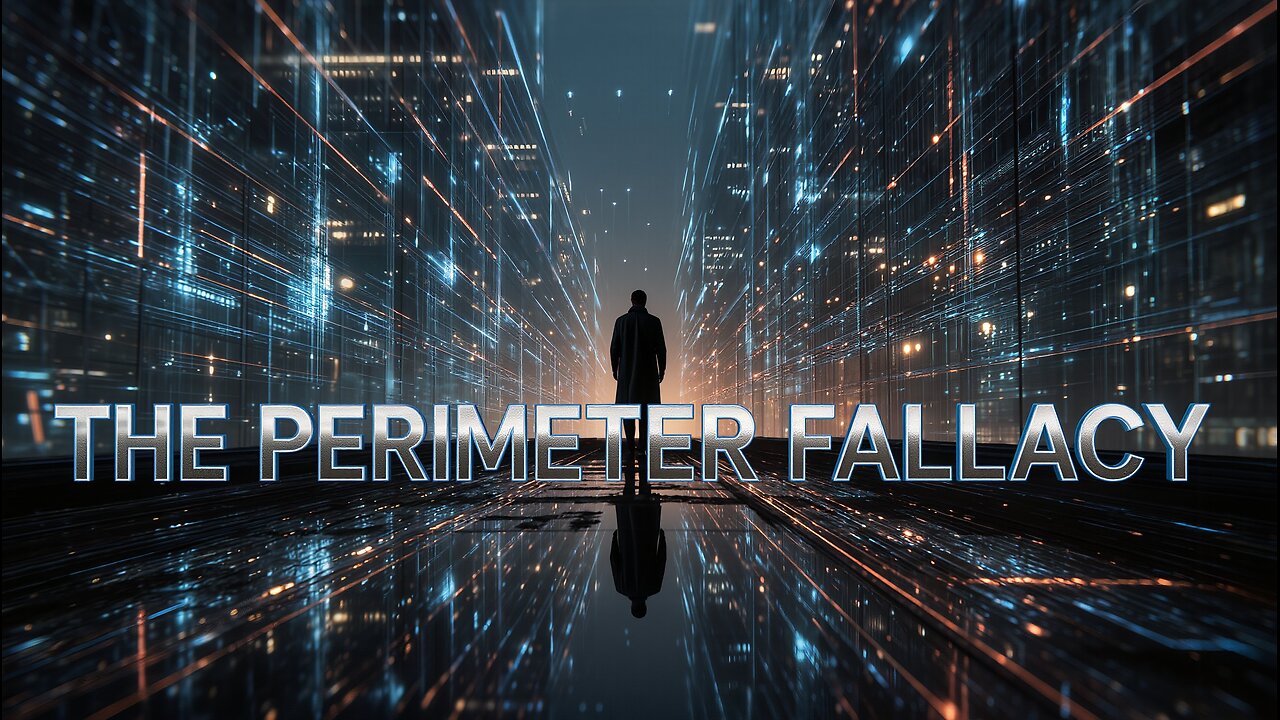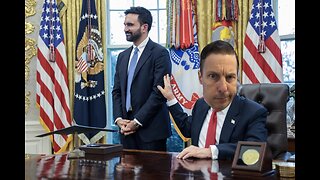Premium Only Content

What Is The Perimeter Fallacy?
The Perimeter Fallacy is the belief that one can create safety, control, or truth by fortifying the boundaries—rather than addressing what lies within. It is the illusion that danger always comes from outside, and that by drawing lines, building walls, or enforcing codes at the edge, one has secured the whole. But this is a trap. Because the weakness isn’t always in what enters—it is often in what’s already there.
Form is border obsession. Whether in physical defense (walls, checkpoints), intellectual thought (dogma, definitions), or systems (firewalls, protocols), the Perimeter Fallacy appears as an overemphasis on external limits. It assumes that threat is a foreign thing to be repelled, rather than a dynamic force that might already be embedded. In doing so, it mistakes boundary-making for wisdom, and policy for perception.
Material is fear misdirected. The fallacy thrives on anxiety, on the desperate need for certainty. So we build fences, mental and literal. We install systems that monitor entry but not decay. We believe that if we can keep the “other” out—whether an enemy, an idea, or a virus—we will be safe. But nothing corrupts a system more quietly than rot from within. No wall can keep out what’s already home.
Purpose is control masquerading as care. Those who sell the Perimeter Fallacy often do so to maintain power. It allows them to frame threat as otherness, to distract from internal failures, to justify surveillance, segregation, or censorship. It creates enemies at the gate while ignoring traitors in the throne room. It frames security as exclusion, when true stability demands internal coherence, not just external resistance.
In theology, it becomes dogmatism: safeguarding doctrine while the spirit rots.
In governance, it becomes authoritarianism: guarding borders while justice collapses.
In the mind, it becomes denial: fencing off bad thoughts while indulging broken desires.
The Perimeter Fallacy forgets that a castle with strong walls and no food will fall just as surely. That a temple with closed gates but no living fire is already empty.
Real protection begins at the center. Truth, trust, security—these do not emerge from barricades, but from alignment, integrity, and vigilance within. The boundary has its role, but it cannot replace the soul.
The Fallacy teaches us to look outward when we should be looking inward.
To fear invasion when we should fear corrosion.
To mistake the line for the life.
That is its danger. That is why it must be named.
-
 19:32
19:32
MetatronHistory
19 hours agoWas Nazism Left Wing or Right Wing? An Answer From History
4.21K21 -
 LIVE
LIVE
a12cat34dog
3 hours agoI'M FINALLY BACK :: Resident Evil 4 (2023) :: FINISHING MAIN GAME & DLC {18+}
205 watching -
 31:23
31:23
Stephen Gardner
2 hours agoFINALLY! Charlie Kirk MISSING DETAILS released!
10K98 -
 5:26:11
5:26:11
cosmicvandenim
7 hours agoCOSMIC VAN DENIM | SEX APPEAL & HORROR
5.02K9 -
 LIVE
LIVE
DoldrumDan
3 hours agoFINISHING SEKIRO - DEPTH 5 TOP RANKED - DAY 50 NEW LIFE
47 watching -
 23:40
23:40
MYLUNCHBREAK CHANNEL PAGE
1 day agoWe Want the Blueprints
54K15 -
 LIVE
LIVE
PenguinSteve
4 hours agoLIVE! Penguin to the Battlefield (6)
54 watching -
 1:08:20
1:08:20
The Quartering
5 hours agoMTG Quits, Indian X Meltdown & FBI Caught Lying Again About Trump Assassin
131K71 -
 1:01:33
1:01:33
Jeff Ahern
6 hours ago $10.15 earnedThe Saturday Show with Jeff Ahern
43.1K23 -
 18:08
18:08
Professor Nez
6 hours ago🚨HOLY CRAP: Members of Congress Call for Military INSURRECTION!
106K100